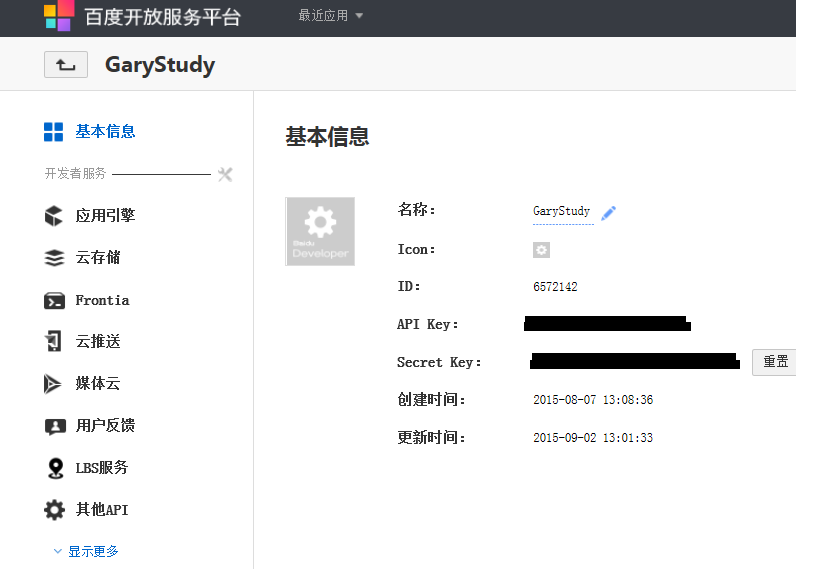调用百度翻译需要一个API Key。具体可以去这里http://developer.baidu.com/console#app/project 申请,申请完以后就可以看到下面的页面:
获取以后就可以调用翻译API了 。
我们需要定义2个类存放返回的结果:
public class TranslationResult
{
public string Error_code { get; set; }
public string Error_msg { get; set; }
public string From { get; set; }
public string To { get; set; }
public string Query { get; set; }
public Translation[] Trans_result { get; set; }
}
public class Translation
{
public string Src { get; set; }
public string Dst { get; set; }
}
第一个类代表着返回结果的状态等信息,同时它还包含了真正的翻译结果,是一个Translation数组。因为你需要翻译的字符串可能是多行的所以是一个数组,当然你也可以把他定义成集合。而第二个类代表着翻译的每一行的原文和译文。
另外百度翻译的直接返回结果是一个JSON类型的字符串,所以我们可以通过System.Web.Script.Serialization.JavaScriptSerializer类进行反序列化,变成我上面定义的 那2个类,这就是为什么我定义的属性中会存在Error_code这样奇怪的名字。
此外我还定义了一个枚举,用来存放语言语种:
public enum Language
{
Auto = 0,
ZH = 1,
JP = 2,
EN = 3,
KOR = 4,
SPA = 5,
FRA = 6,
TH = 7,
ARA = 8,
RU = 9,
PT = 10,
YUE = 11,
WYW = 12,
DE = 13,
NL = 14,
IT = 15,
EL = 16
}
最后我们只需要向百度翻译发送请求就可以了:
public static TranslationResult GetTranslationFromBaiduFanyi(string source, Language from = Language.Auto, Language to = Language.Auto)
{
string jsonResult = string.Empty;
string apiKey = "yourApiKey";
string url = string.Format("http://openapi.baidu.com/public/2.0/bmt/translate?client_id={0}&q={1}&from={2}&to={3}",
apiKey,
HttpUtility.UrlEncode(source, Encoding.UTF8),
from.ToString().ToLower(),
to.ToString().ToLower());
WebClient wc = new WebClient();
try
{
jsonResult = wc.DownloadString(url);
}
catch (Exception e)
{
jsonResult = string.Empty;
}
JavaScriptSerializer jss = new JavaScriptSerializer();
TranslationResult ret = jss.Deserialize<TranslationResult>(jsonResult);
return ret;
}
